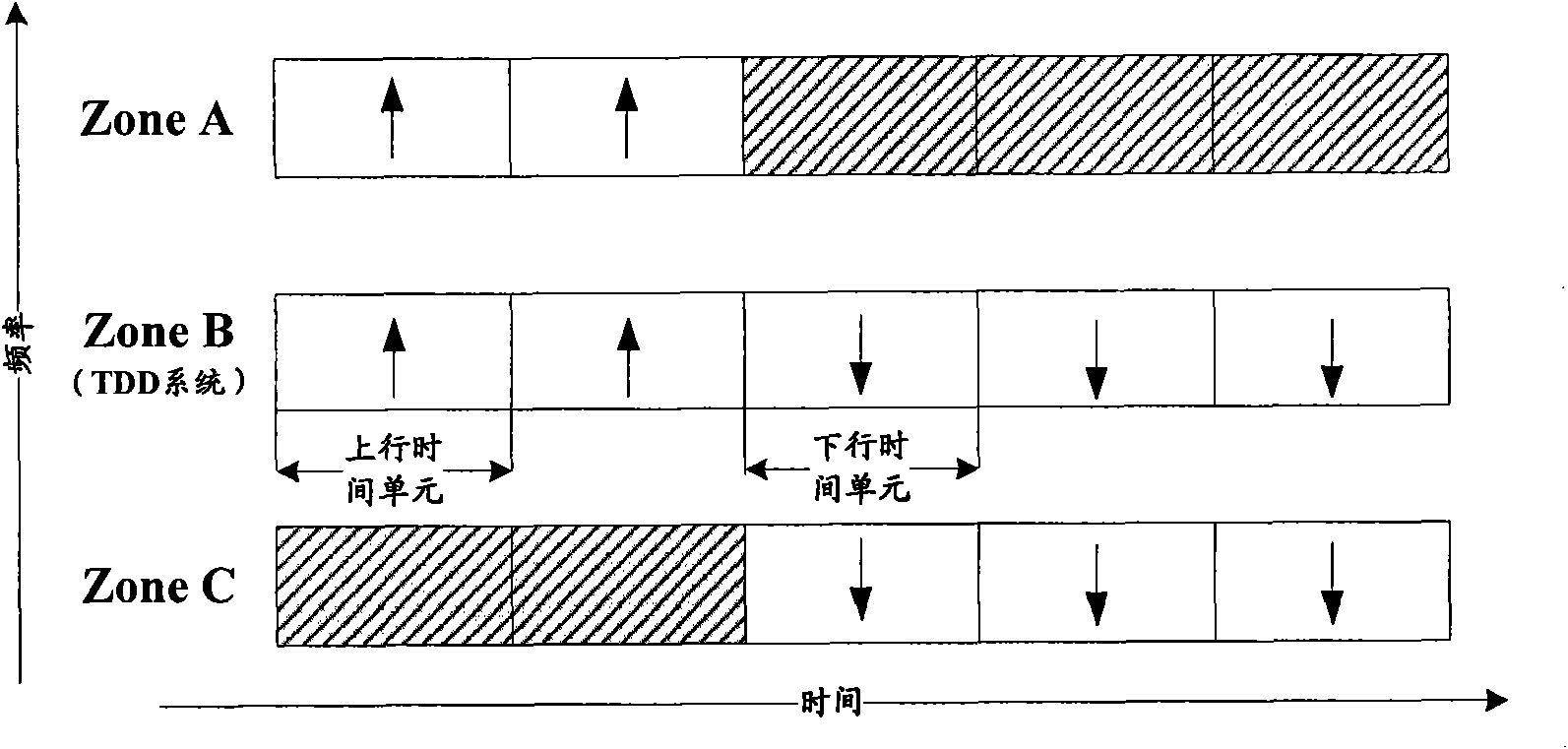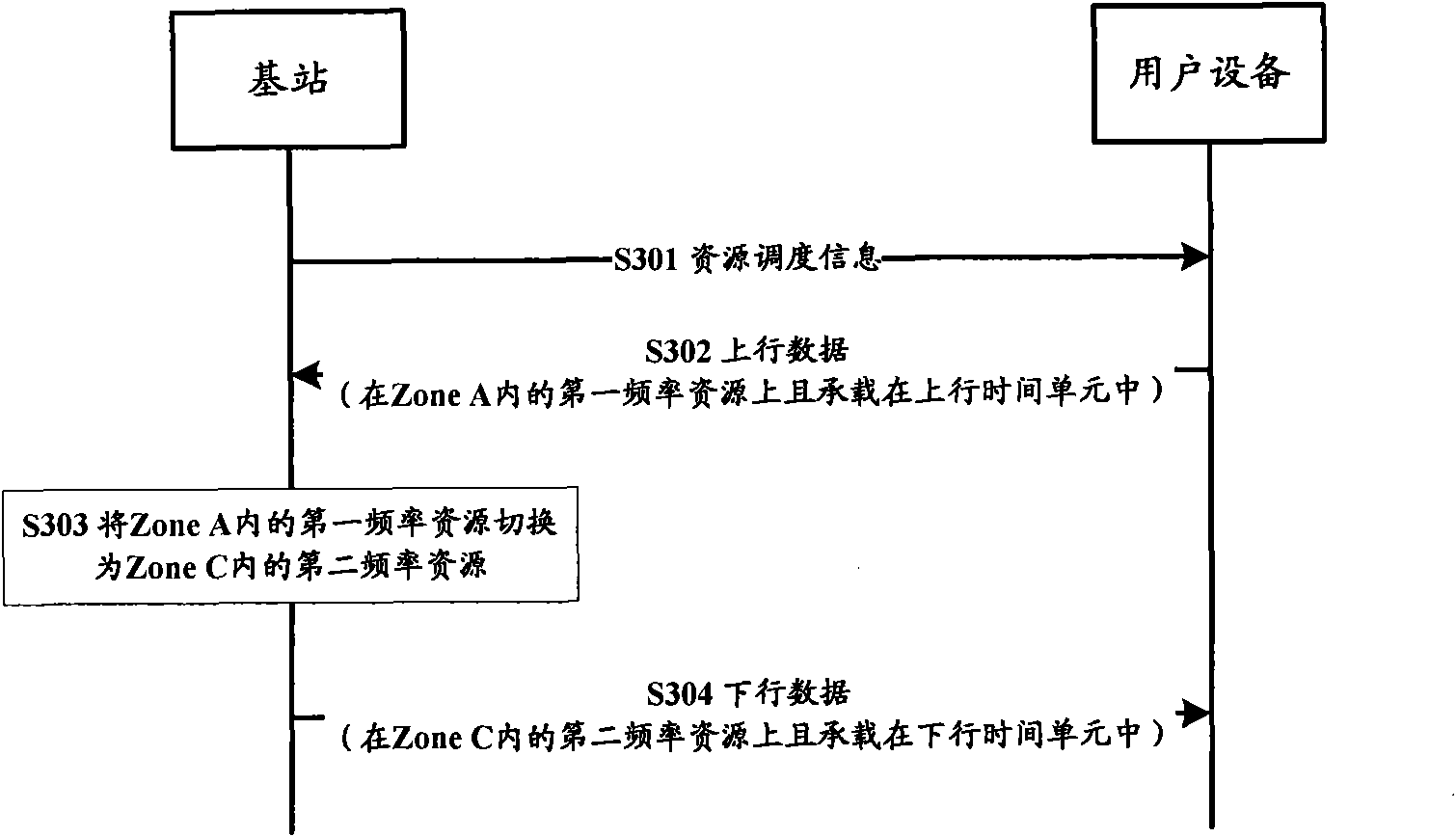Method and equipment for using guard band
A technology for guarding frequency bands and user equipment, applied in electrical components, wireless communications, network planning, etc., can solve the problems of frequency resource waste, low utilization rate of mobile communication spectrum resources, limited frequency resources, etc., to meet the requirements of suppressing adjacent frequency interference, The effect of improving the utilization rate of spectrum resources
- Summary
- Abstract
- Description
- Claims
- Application Information
AI Technical Summary
Problems solved by technology
Method used
Image
Examples
Embodiment 1
[0067] Embodiment 1 is aimed at application scenario 1. Zone A, Zone B and Zone C are used in a TDD system, where Zone A and Zone C can be used as a pair. The base station and user equipment in the TDD system use the frequency resources in Zone A and Zone C for data transmission, such as image 3 shown, including the following steps:
[0068] S301. The base station allocates frequency resources in Zone A (referred to as first frequency resources for ease of distinction) to user equipment and sends resource scheduling information;
[0069] S302. According to the resource scheduling information, the user equipment carries uplink data on the first frequency resource in Zone A and sends it to the base station in uplink time units. Correspondingly, the base station receives the user equipment on the first frequency resource in Zone A bear the uplink data sent in the uplink time unit;
[0070] S303. The base station switches the first frequency resource in Zone A to the frequency ...
Embodiment 2
[0074] Embodiment 2 is aimed at application scenario 2, using Zone A and Zone B in the TDD system, and using Zone C, FDD uplink frequency band and FDD downlink frequency band in the FDD system. The base station and user equipment in the TDD system use the frequency resources in Zone A and Zone B for data transmission, such as Figure 4 shown, including the following steps:
[0075] S401. The base station allocates frequency resources in Zone A (referred to as first frequency resources for ease of distinction) to user equipment and sends resource scheduling information;
[0076] S402. According to the resource scheduling information, the user equipment carries uplink data on the first frequency resource in Zone A and sends it to the base station in uplink time units. Correspondingly, the base station receives the user equipment on the first frequency resource in Zone A bear the uplink data sent in the uplink time unit;
[0077] S403. The base station switches the first freque...
Embodiment 3
[0086] Embodiment 3 Aiming at application scenario 3, Zone A, Zone C, FDD uplink frequency band and FDD downlink frequency band are used in the FDD system, where Zone A and Zone C can be paired for use. The base station and user equipment in the FDD system use the frequency resources in Zone A and Zone C to perform data transmission, such as Figure 6 shown, including the following steps:
[0087] S601. The base station allocates frequency resources in Zone A (referred to as first frequency resources for ease of distinction) to user equipment and delivers resource scheduling information;
[0088] S602. According to the resource scheduling information, the user equipment sends the uplink data to the base station on the first frequency resource in Zone A in the time period consistent with the uplink time unit of the TDD system. Correspondingly, the base station in Zone A On the first frequency resource, receive uplink data sent by the user equipment;
[0089] S603. The base st...
PUM
 Login to View More
Login to View More Abstract
Description
Claims
Application Information
 Login to View More
Login to View More - R&D
- Intellectual Property
- Life Sciences
- Materials
- Tech Scout
- Unparalleled Data Quality
- Higher Quality Content
- 60% Fewer Hallucinations
Browse by: Latest US Patents, China's latest patents, Technical Efficacy Thesaurus, Application Domain, Technology Topic, Popular Technical Reports.
© 2025 PatSnap. All rights reserved.Legal|Privacy policy|Modern Slavery Act Transparency Statement|Sitemap|About US| Contact US: help@patsnap.com



